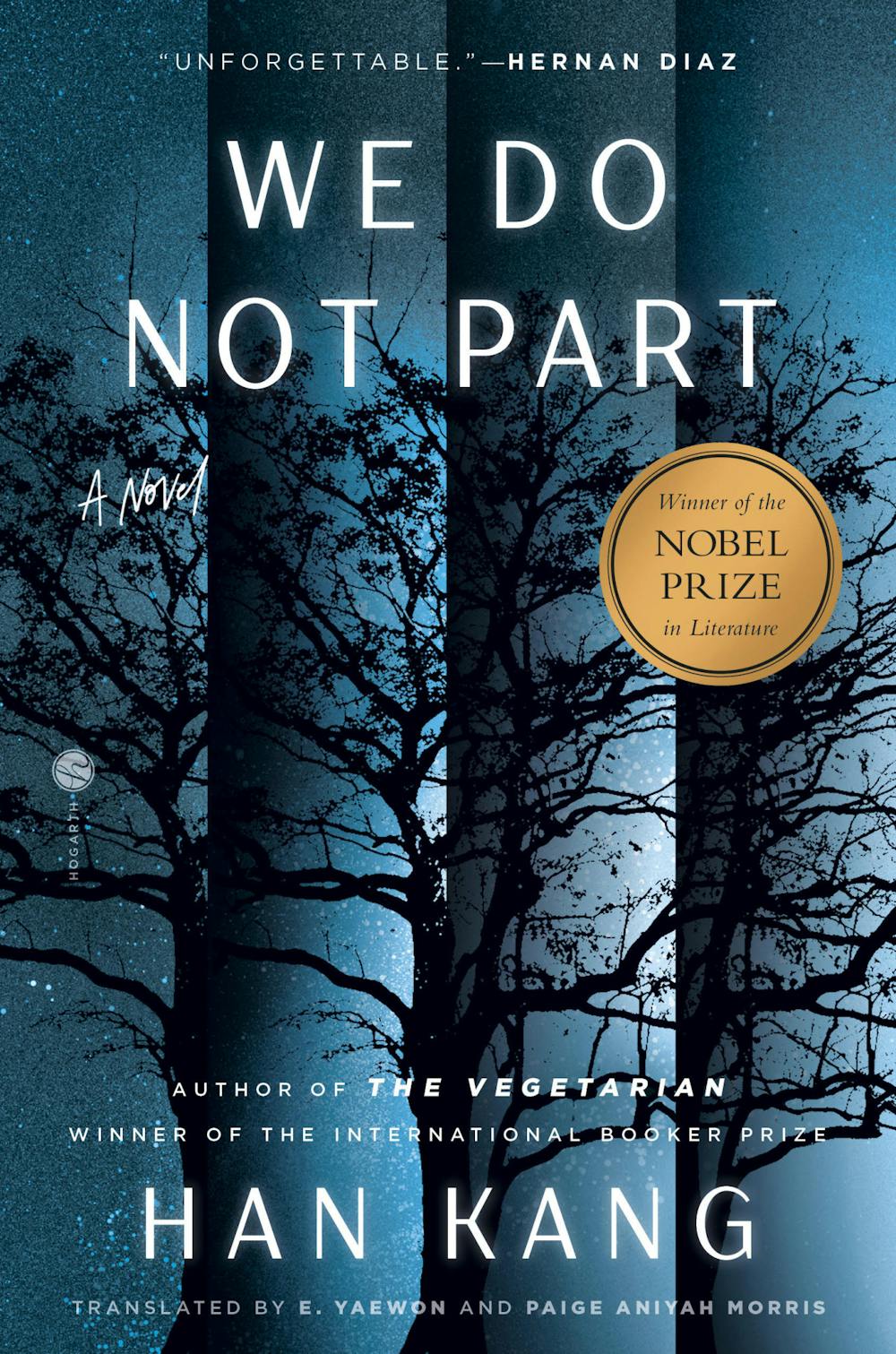Review: Han Kang’s ‘We Do Not Part’ won’t leave you

Kyungha has nothing left to live for, until she is tasked with saving the life of her friend’s bird. What follows is a haunting exploration of the burden of remembrance and historical violence. Originally published in Korean in 2021, “We Do Not Part,” translated into English by e. yaewon and Paige Aniyah Morris, was released Jan. 21. It left me breathless; Kang’s latest novel still sits heavy on my chest and haunts my thoughts. In “We Do Not Part,” Han Kang proves why she was the worthy recipient of the 2024 Nobel Prize in Literature.
“We Do Not Part” has a deceptively simple beginning. Kyungha, the novel’s narrator, receives a call from a friend, Inseon, summoning her to a Seoul-area hospital. A recovering documentary filmmaker who lives on Jeju Island, Inseon now dedicates herself to carpentry after a severe accident. She was transported off the island to Seoul, and after summoning Kyungsha to the hospital with a cryptic text, Inseon asks her to travel to Jeju, some 450 kilometers away, to look after her pet bird. What follows is as indescribable as it is inexplicable.
The novel highlights various massacres that took place during and after the Jeju uprising, specifically the Bodo League Massacres and the Gyeongsan Cobalt Mine Massacre. By placing her readers amongst characters struggling with the responsibility of remembering the massacred, Kang’s writing exemplifies why it is so important to investigate our past.
Kyungha, the main protagonist, wrote a book some years ago on massacres during the Korean War, and the images of the dead she uncovered still haunt her dreams, while Inseon’s deceased mother survived the massacres. Both protagonists are haunted by what they have learned and struggle to live in a world they can only see as tainted by the blood spilled years ago.
Violence permeates these communities and every page of this novel. Not only does Kang bring to the surface the historical violence experienced by Koreans during this time, but also the violence that is created when these histories are obfuscated and ignored.
The novel is divided into three parts. In Part I: “The Bird,” Kyungha travels to Jeju, arriving in a snowstorm and almost losing her life as she journeys to Inseon’s remote village. This section is also the most easily understood. That is not to say that it is boring or straightforward, but we are orientated, and trust Kyungha’s experience of reality. This feeling of clarity does not last, however, because Part II and Part III will have you doubting everything you previously read.
In Part II and Part III, titled “Night” and “Flame” respectively, Kyungsha enters a dream-like state, where the gap between reality, memory and the past disappears. Insheon appears, healed – or was she never sick? Or maybe Kyungha is still delirious, stuck in the snow?
Kang effortlessly transitions between m mory, delusion and reality as Kyungha and Inseon struggle with the responsibility of carrying these memories. As they spend time together in Inseon’s cottage, they are confronted by memories — of daring escapes, blood-filled beaches and the bones of thousands — immortalized in victim testimony, government documents and photographs.
However, these images are not presented for shock value, nor do they feel voyeuristic. By offering us the perspective of someone researching and remembering them, the victims themselves are not erased or exploited through fictionalization.
The most striking aspect of Kang's prose is her use of simile. Kang uses them incredibly frequently, but they never feel superfluous or gimmicky. Instead, each and every one of them was precise and enriched the writing. My lack of Korean fluency means that I can't evaluate how faithfully e. yaewon and Paige Aniyah Morris translated the text, but at no point did I read sentences that felt clunky or unnatural. Finally, the lack of speech marks in the novel, and tagged speech in general, gives dialogue a translucent quality. We are left wondering if it was actually spoken.
After Kyungha uses the phrase “we do not part,” Inseon asks, “As in we refuse to part by refusing to say goodbye, or as in we actually don’t part ways? … Is it somehow incomplete, the parting … Is it deferred? The goodbye — or the closure? Indefinitely?” After finishing the novel, you learn that "We Do Not Part" is not a wish nor a command — it is a fact. These stories will survive us.
More from The Rice Thresher

Founder’s Court goes alt-rock as bôa kicks off U.S. tour at Rice
Founder’s Court morphed into a festival ground Friday night as British alt-rock band bôa launched the U.S. leg of their “Whiplash” tour. The group headlined the third annual Moody X-Fest before what organizers estimate was “a little bit over 2,000 students” — the largest turnout in the event’s three-year history.

“You need a therapist, not a keyboard”: Loretta Ross on calling in
Loretta Ross jokes that she can “talk as long as Fidel Castro.” These days, her urgency is reserved for speaking against the 'call out' — the act of public shaming as a corrective measure — which she said has become as "inevitable as gravity” during her lecture at Duncan Hall on April 14.

Review: ‘Daredevil: Born Again’ struggles with identity but shows promise
Following Netflix’s acclaimed third season of "Daredevil," expectations were understandably high for Marvel’s new Disney+ continuation, "Daredevil: Born Again." Unfortunately, the series suffers noticeably from a split personality, caught between excellence and confused mediocrity.

Please note All comments are eligible for publication by The Rice Thresher.